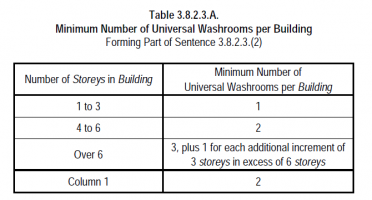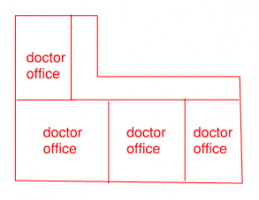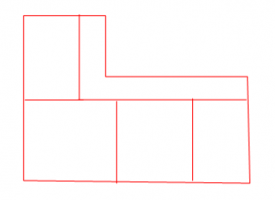This is from Ontario Building Code:
----------------------------------------------------------------------------------------------------------------------------------
3.8.2.3. Washrooms Required to be Barrier-Free (See Appendix A.)
(1) A barrier-free path of travel shall be provided to barrier-free washrooms designed to accommodate persons with
disabilities in conformance with the requirements in Articles 3.8.3.8. to 3.8.3.12.
(2) The number of universal washrooms conforming to Article 3.8.3.12. provided in a building in which a washroom is
required by Subsection 3.7.4. shall conform to Table 3.8.2.3.A. (See Appendix A.)

_______________________________________________________________________________________________________________________
Questions:
1. Does the above table require the universal washroom shall be in the public area of the building?
2. In a doctor office building, is every suite of the doctor office required to have universal washroom? (Assume the building is required to have barrier-free path of travel)

----------------------------------------------------------------------------------------------------------------------------------
3.8.2.3. Washrooms Required to be Barrier-Free (See Appendix A.)
(1) A barrier-free path of travel shall be provided to barrier-free washrooms designed to accommodate persons with
disabilities in conformance with the requirements in Articles 3.8.3.8. to 3.8.3.12.
(2) The number of universal washrooms conforming to Article 3.8.3.12. provided in a building in which a washroom is
required by Subsection 3.7.4. shall conform to Table 3.8.2.3.A. (See Appendix A.)

_______________________________________________________________________________________________________________________
Questions:
1. Does the above table require the universal washroom shall be in the public area of the building?
2. In a doctor office building, is every suite of the doctor office required to have universal washroom? (Assume the building is required to have barrier-free path of travel)


